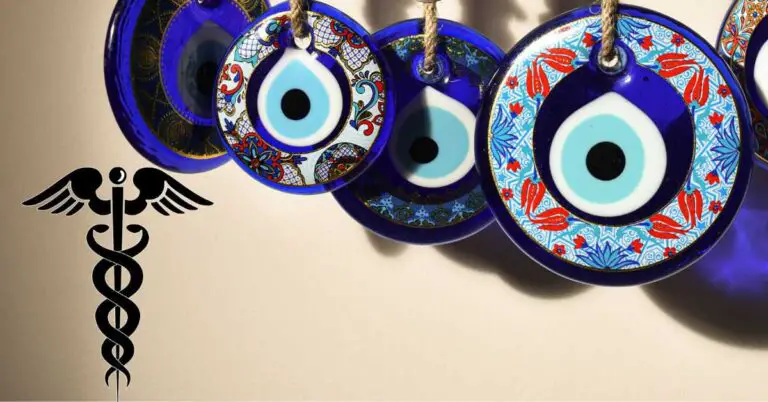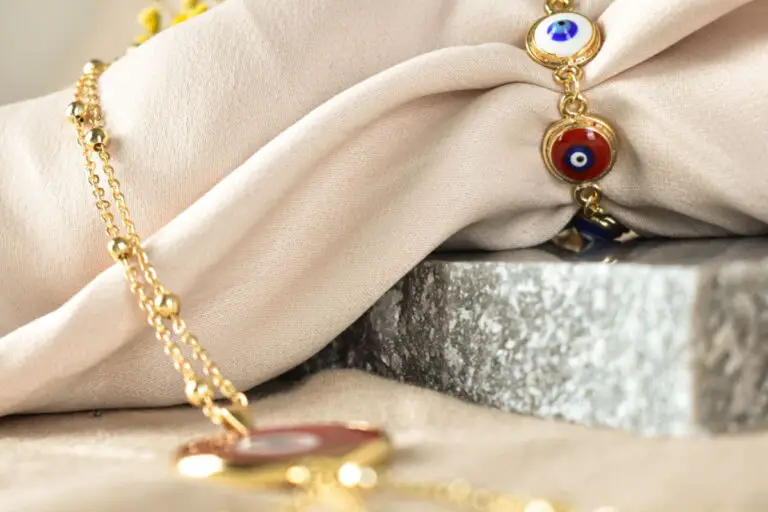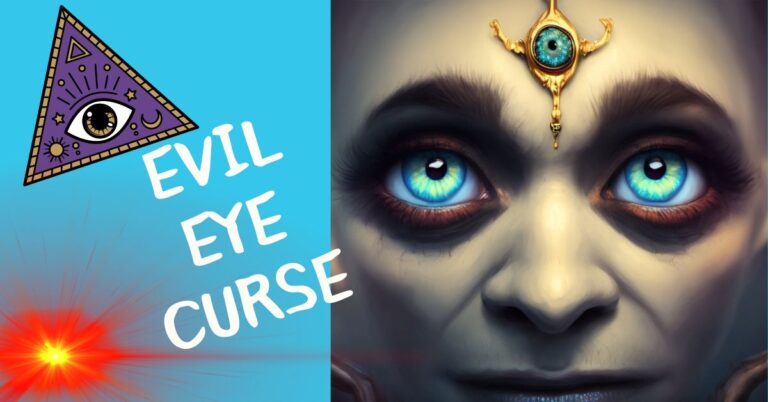Evil Eye History Mediterranean Countries: Nothing Held Back
Important Take Aways
- The evil eye, or “mati” in Greece, is a pervasive belief in the power of a malevolent gaze that has influenced cultures across the Mediterranean region.
- Greeks, Turks, Italians, Spaniards, and Portuguese have embraced various practices and symbols to protect themselves from the harmful effects of the evil eye.
- Amulets adorned with blue beads, rituals involving olive oil and water, and talismans like “nazar boncuğu,” “malocchio,” “azabaches,” and “cones de proteção” are common protective measures.
- The evil eye has a deep-rooted history in Greece, seen in ancient mythology, religious texts, folklore, and cultural practices.
- Italy’s history with the evil eye is intertwined with Roman mythology, and Italians use charms like “cornicelli” and incorporate red chili peppers as protective symbols.
- Spain has a long-standing belief in the evil eye (“el mal de ojo”) seen in its folklore, religious practices, and protective symbols like the “mano de Fátima.”
- Portugal’s belief in the evil eye (“mau olhado”) is evident in its ancient traditions, literature, amulets like “azulejos,” and superstitious practices.
- Each region has its own unique customs, rituals, symbols, and beliefs to protect against the evil eye, but they all recognize its power and take precautions against its malevolent effects.
- The belief in the evil eye serves as a reminder of the power of envy and jealousy and the need for safeguards against their potentially harmful consequences.
- The evil eye remains an enduring aspect of Mediterranean cultures, shaping daily life and serving as a testament to its enduring power across borders and throughout time.
Mediterranean region
Evil Eye History Mediterranean Countries. The Mediterranean region is brimming with captivating tales and ancient traditions surrounding the enigmatic phenomenon known as the evil eye.
This pervasive belief in the power of this malevolent gaze has left an indelible mark on cultures spanning from Greece to Italy, Turkey to Spain, and beyond.
In Greece, the evil eye, or “mati” as it is locally known, holds immense cultural significance.
It is believed that certain individuals possess an innate ability to cast this potent curse through their jealous or envious glances.
To protect themselves from its harmful effects, Greeks have embraced various practices and symbols throughout history.
From wearing amulets adorned with blue beads symbolizing protection against the evil eye to performing rituals involving olive oil and water, these customs have become ingrained in Greek folklore. Similarly, in Turkey, the evil eye is deeply ingrained within society.
Known as “nazar,” this belief extends across religious and cultural boundaries. Turkish people hold steadfastly to a multitude of practices aimed at warding off the malevolence of the gaze.
Blue talismans called “nazar boncuğu” are commonly found adorning homes, cars, and even newborns’ cribs as a protective measure against evil eye affliction. Moving westward to Italy, we encounter another rich tapestry of ancient traditions surrounding the evil eye.
Italians refer to it as “malocchio” and consider it a powerful force capable of causing illness or misfortune.
To counter its effects, they employ an interesting blend of superstitions such as making hand gestures resembling horns or reciting prayers for protection against malocchio.
Spain too boasts a long-standing belief in el ojo maligno (the evil eye), which has seeped into its cultural fabric for centuries.
Spanish folklore abounds with tales depicting encounters with individuals possessing this feared gaze that can bring harm upon others without warning.
To safeguard against its influence, people often wear amulets, known as “azabaches,” made from jet or black coral, both believed to possess protective powers. Portugal also shares in the Mediterranean’s fascination with the evil eye.
Known as “mau-olhado,” its presence is believed to bring misfortune and illness. The Portuguese have developed a range of practices rooted in their folklore to shield themselves from its effects.
Some common strategies include using prayer cards or small metal discs shaped like an eye, called “cones de proteção,” often displayed in homes and worn as pendants.
Intriguingly, these Mediterranean cultures share a common thread—an understanding that the evil eye is a force to be reckoned with.
From Greece’s mati to Turkey’s nazar boncuğu, Italy’s malocchio to Spain’s el ojo maligno, and Portugal’s mau-olhado – each region has woven their own unique tapestry of customs, rituals, symbols, and beliefs to protect themselves against this ancient menace.
This deep-rooted belief continues to shape daily life and serves as a testament to the enduring power of the evil eye across borders and throughout time.

What Is The History of the evil eye in Greece?
Greece, the land of ancient myths and legends, has a long and fascinating history when it comes to the evil eye.
This mystical concept dates back thousands of years and is deeply ingrained in Greek culture. From mythology to religious texts, the evil eye has left its mark on Greek society.
In ancient Greece, the evil eye was believed to possess immense power – both for good and for ill.
It was commonly associated with jealousy and envy, two emotions that were considered detrimental to one’s well-being.
The belief in the evil eye was so strong that it permeated every aspect of daily life. People sought protection from its malevolent gaze through various rituals and talismans.
One of the most famous references to the evil eye in Greek mythology is found in Homer’s “The Odyssey.” In this epic tale, Odysseus encounters a cyclops named Polyphemus who possesses a wicked eye capable of cursing those who meet its gaze.
This story serves as a cautionary tale about the dangers of provoking someone with an envious eye.
Religious texts further reinforce the presence of the evil eye in Greek society. In Orthodox Christianity, there are numerous references to this concept in both liturgical prayers and sacred writings.
The church recognizes its power and provides prayers for protection against its harmful effects. The cultural significance attached to the evil eye is evident even today.
It is a common belief among Greeks that someone can inadvertently cast an envious glance that brings misfortune upon others.
Therefore, precautionary measures are taken to ward off this negativity.
Amulets known as “mati” or “nazar” are frequently worn or displayed in homes, shops, and cars as protective talismans against the curse of the evil eye. Greek folklore is rich with stories about encounters with individuals believed to possess an evil gaze.
These tales often involve encounters with witches or old women who have been bestowed with this supernatural ability.
The legends warn of the potential harm that can befall those who fall under the spell of the evil eye.
The evil eye’s historical presence in Greece is also evident in various practices and traditions that have survived throughout the centuries.
For example, during weddings, guests often pin a blue bead or charm to their clothing to ward off any ill fortune that may arise from envious eyes.
Greece has a deep-rooted history when it comes to the evil eye. It has been present in mythology, religious texts, folklore, and cultural practices for countless generations.
Even today, protection against its malevolent effects remains an important aspect of Greek society.
The evil eye serves as a reminder of the power of envy and jealousy and the need for safeguards against their potentially harmful consequences.
The Evil Eye or Malocchio – Italian Witchcraft & Paganism
What Is The History of the evil eye in Italy?
Italy, a country known for its rich cultural heritage and captivating folklore, has its own intriguing history when it comes to the belief in the evil eye.
Stemming from ancient traditions and steeped in centuries-old superstitions, the concept of the evil eye holds a significant place in Italian culture.
Evil eye beliefs have been deeply ingrained in Italian society for generations. The influence of Roman mythology can be seen in this aspect as well.
The ancient Romans believed that some individuals possessed a powerful gaze capable of causing harm or misfortune to others.
This concept gradually evolved into what we now refer to as the evil eye.
In Italian folklore, there are numerous tales and legends that revolve around the evil eye.
One such story tells of a young girl named Lucia who was thought to possess an irresistible beauty that attracted envy from those around her.
It was believed that her striking looks brought about misfortune upon anyone who gazed upon her with jealousy, inadvertently cursing them with the power of the evil eye.
To protect against this supposed malevolent force, Italians developed various traditions and practices aimed at warding off the evil eye.
These rituals involve specific gestures or objects believed to possess protective qualities.
For instance, many Italians wear amulets or charms known as “cornicelli” or “corna” – small pendants shaped like horns – as symbols of protection against malicious gazes.
Moreover, some regions in Italy have unique customs associated with averting the effects of the evil eye.
For instance, in Naples, it is common to find red chili peppers hanging outside homes or worn as accessories since they are considered powerful talismans against envious stares.
Despite its ancient origins and lingering presence throughout history, beliefs regarding the evil eye vary among different regions within Italy itself. In some areas, it may be regarded with utmost seriousness and precautionary measures firmly adhered to while other regions view it more lightheartedly, considering it as a part of their cultural identity and folklore.
Italy’s history regarding the evil eye is deeply rooted in ancient traditions and beliefs. From ancient mythology to local legends, the concept of the evil eye has played a significant role in shaping Italian culture.
Whether through protective amulets or unique customs, Italians have embraced various practices to safeguard themselves against this perceived threat of negative energy.
The belief in the evil eye continues to be an intriguing aspect of Italy’s cultural fabric, blending superstition and folklore into everyday life.

What Is The History of the evil eye in Spain?
The history of the evil eye in Spain is deeply rooted in ancient folklore and cultural beliefs.
Throughout history, Spain has been a melting pot of various civilizations and cultures, each contributing to its rich tapestry of traditions and superstitions.
The belief in the evil eye has been passed down from generation to generation, with many Spaniards still holding onto these ancient beliefs.
In Spanish folklore, the evil eye is often referred to as “el mal de ojo,” and it is believed to possess the power to bring about misfortune or injury.
Superstitions surrounding the evil eye are prevalent in different regions of Spain, with various practices aimed at protecting oneself from its malevolent effects.
One popular protective tradition against the evil eye is wearing a “mano de Fátima” or Hamsa hand charm.
This symbol, originating from Islamic culture but adopted widely across Spain, is believed to ward off negative energy and protect against any harm caused by an envious gaze.
Additionally, another common practice among Spaniards is carrying a small pouch filled with herbs or crystals known for their protective properties.
These pouches are often worn around the neck or kept close at hand to ensure constant protection against the evil eye.
Furthermore, Spanish religious texts also make references to the concept of the evil eye.
In Catholicism, prayers such as “Ave Maria” or “Our Father” are recited as a form of protection against any harmful intentions directed towards an individual.
The belief in the evil eye holds significant cultural significance in Spain as well.
It is frequently portrayed in traditional art forms like paintings and ceramics, depicting symbols associated with protection against this malevolent force.
Additionally, Spanish festivals and rituals often incorporate elements related to warding off the evil eye through dances, songs, and rituals passed down through generations.
Spain’s history regarding the evil eye demonstrates how ancient traditions and beliefs continue to shape contemporary culture in fascinating ways.
The Spanish people’s reverence for these beliefs, coupled with their deep-rooted superstitions and practices, illustrate the enduring influence of this concept on their lives. Whether through protective amulets, religious rituals, or artistic depictions, the evil eye has remained an integral part of Spanish folklore and cultural identity.
What Is The History of the evil eye in Portugal?
In Portugal, the evil eye, known as “mau olhado,” has a long and intriguing history rooted in ancient traditions. The belief in the evil eye is deeply ingrained within Portuguese culture, and its influence can be seen in various aspects of daily life.
Evil eye folklore has been passed down from generation to generation, with tales of its malevolent powers and the need for protection against its gaze. Historical references to the evil eye in Portugal date back centuries.
It was believed that certain individuals possessed the ability to cast this curse simply by giving someone an envious or jealous look.
This notion can be seen reflected in Portuguese literature and ancient texts where discussions of evil eye practices were prevalent.
To counteract its effects, protective measures were taken by wearing amulets or charms known as “azulejos” depicting symbols meant to ward off the evil eye’s influence.
These talismans are often found adorning homes and even incorporated into decorative tiles throughout Portugal.
The cultural significance of the evil eye is apparent in traditional Portuguese celebrations and rituals.
For instance, during festivals such as Festa dos Tabuleiros, locals wear bright-colored ribbons around their wrists to protect themselves from any possible ill-wishing gazes.
Even today, superstitious beliefs surrounding the evil eye persist among some individuals in Portugal.
It is not uncommon to hear stories of people falling ill or experiencing misfortune due to someone’s envy or jealousy.
In response, various practices are followed to cleanse oneself from the effects of the curse, including prayers, ritual baths with herbs such as rosemary or sage, or seeking assistance from local healers known as “rezadeiras.” Portugal has a rich history when it comes to beliefs surrounding the evil eye.
From ancient traditions and folklore to modern-day superstitions and protective rituals, this cultural phenomenon continues to shape Portuguese society.
Whether viewed through a lens of mythology or personal experiences, the evil eye remains a captivating aspect of Portugal’s cultural tapestry.
Conclusion
The belief in the evil eye has deep roots in the Mediterranean region, with Greece being one of the prominent countries where this superstition thrived.
The ancient Greeks believed that envy and jealousy could lead to harm and misfortune, causing them to take precautions against the evil eye.
They wore amulets, such as blue glass beads called “mati,” to protect themselves from its gaze. Similarly, Turkey also has a rich history in the evil eye tradition.
Known as “nazar,” it is believed that wearing a talisman or hanging an evil eye bead in homes or cars can ward off ill intentions and bring good luck. In Italy, particularly in Southern regions like Sicily and Calabria, the “malocchio” is feared.
People there believe that certain individuals possess an innate power to cast spells with just a glance, resulting in curses and misfortunes on their victims.
Spain and Portugal also have their own versions of the belief in the evil eye.
In Spain, it is referred to as “el mal de ojo” or simply “mal ojo,” which translates to “the evil of the eye.” Many Spanish households display small charms or amulets known as “azabache” to ward off this negative energy.
Portugal has a similar concept called “mau-olhado,” where people carry small blue stones or use hand gestures known as “figas” for protection against this malevolent force.
While rooted in ancient beliefs and cultural superstitions, the history of the evil eye across Mediterranean countries tells us about humanity’s deep-seated fear of envy and its potential consequences.
These traditions have been passed down through generations as a means of protection against malicious intent.
Though some may view these beliefs with skepticism today, they continue to hold significance for many individuals who find comfort and reassurance in their practices.
Ultimately, it reminds us of our shared human need for hope and protection, and the power we have to overcome negative energy through faith, resilience, and positive thinking.
If you Enjoyed reading this article you will live Which Evil Eye is for Love: Understanding the Power and Romance
Frequently Asked Questions
What is the evil eye?
The evil eye, also known as “nazar” or “malocchio,” is a belief that certain individuals possess the power to cast a malevolent gaze upon others, causing harm or misfortune.
It is believed that this curse can be inadvertently cast upon someone through envy or admiration. The concept of the evil eye has been deeply ingrained in the cultures of Greece, Turkey, Italy, Spain, and Portugal for centuries.
How can one protect themselves against the evil eye?
Mediterranean cultures have developed various methods to protect themselves from the evil eye’s harmful effects.
One popular method is wearing talismans or amulets that are believed to ward off its negative energies. In Greece and Turkey, you’ll often find people wearing an “evil eye charm,” a blue bead with an engraved eye design that is said to counteract the effects of the curse.
Other protective measures include carrying herbs like rue or using certain rituals involving water or salt.
Are there any telltale signs of being afflicted by the evil eye?
According to local beliefs, symptoms of being affected by the evil eye can vary from person to person but often include feelings of extreme fatigue, headaches, nausea, and unexplained bouts of bad luck or misfortune. Additionally, some people believe that sudden changes in a person’s demeanor – such as becoming unusually irritable or distant – may be indicative of an evil eye affliction.
Can anyone possess the ability to cast an evil eye?
According to local beliefs, symptoms of being affected by the evil eye can vary from person to person but often include feelings of extreme fatigue, headaches, nausea, and unexplained bouts of bad luck or misfortune. Additionally, some people believe that sudden changes in a person’s demeanor – such as becoming unusually irritable or distant – may be indicative of an evil eye affliction.
Can anyone possess the ability to cast an evil eye?
The belief in possessing the power to cast an evil eye often stems from envy and jealousy towards others’ success and happiness.
However, it is commonly believed that not everyone has this ability inherently; rather it is typically associated with individuals who have a strong gaze or possess a striking physical appearance. It should be noted that casting an evil eye curse intentionally is considered unethical in these cultures, and those who do so are frowned upon.
Is the belief in the evil eye still prevalent today?
Absolutely!
Despite the advancement of modern society, the belief in the evil eye remains deeply ingrained in Mediterranean cultures. You’ll find people taking precautions against it and seeking remedies to counteract its effects even in urban areas.
The evil eye continues to be an integral part of their cultural beliefs and practices, passed down through generations. The evil eye is a fascinating aspect of Mediterranean culture that has persisted throughout history.
From talismans and amulets to rituals and remedies, the belief in this malevolent gaze continues to shape these societies’ customs. Whether one is a firm believer or not, it’s undeniable that the evil eye has left an indelible mark on cultural traditions across the region.
- Jewelry Making Ideas: Seasonal Crystal Trends That Command Premium Prices - May 31, 2025
- Evil Eye Hand: Unveiling the Mystical Origins and Meanings - February 2, 2024
- Amegreen Amethyst Meaning: Discover the Hidden Magic! - February 2, 2024







